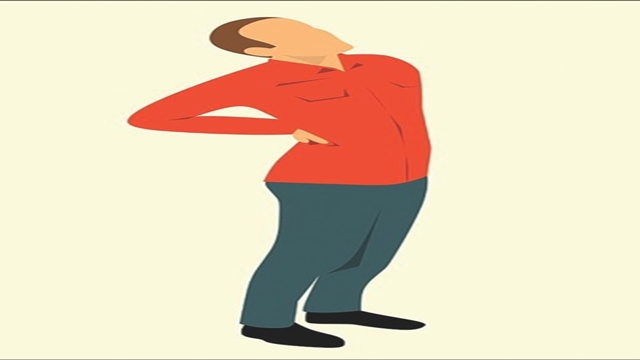Al Fahad
Published:2020-03-01 18:31:22 BdST
Traffic congestion is destroying our musculoskeletal health
A day without traffic congestion cannot be imagined by Dhaka city dwellers. Those who live far from the workplace and those who need to commute daily for various purposes are the main victims of road traffic congestion. City dwellers regardless of age and sex have to face the inevitable notorious phenomenon.
According to the traffic index 2020, Dhaka has become the most traffic-congested city in the world. In Dhaka, the traffic congestion ruins 3.2 million working hours every day according to the World Bank. In the last decade, the average driving speed in Dhaka city dropped from 21 km/h to below 7 km/h. If the current trend continues, within a decade it would become 4 km/h, which is slower than the walking speed.
Traffic congestion not only kills our time on the roads but also puts us in noise and air pollution during the time in the vehicles. In Dhaka city, the public transport is smaller in size and frequently overloaded which has an inadequate head clearance for the standees, fewer leg rooms for the seated ones that force them to adopt a wrong posture. A compact private vehicle or rented three-wheeler also provides minimal space for the seated passengers to alter their postures. Staying in a wrong posture for an extended period of time can induce a musculoskeletal disorder, research revealed.
A number of studies have been conducted to measure the impact of traffic congestion on the environment and human psychology. But long delays in the vehicles due to traffic congestion and its impact on physical health has not been studied before. Recently a study has been conducted on 628 full-time bank employees in Dhaka city to examine the effect of traffic congestion on their musculoskeletal health.
What research revealed?
A shocking picture was found in this research. The prevalence of musculoskeletal pain among full-time bank employees in Dhaka city was 57.2%, while 60.6% of lady bank employees complained about the same.
However, when traffic congestion related factors have been analyzed, the more shocking scenario has been retrieved. About 80% of bank employees who need 60 minutes or more time to come to the office by facing traffic congestion reported musculoskeletal problems. Likewise, those who travel more or equal to 9 km to come to the office, among them, 75.7% reported musculoskeletal health problems.
Furthermore, the prevalence of musculoskeletal health problems was sky-high (80.5%) among those who travel by public transport like a bus.
When the findings were compared to other scholarly articles, it was concluded that long delays on road were an important factor that induced or enhanced musculoskeletal health problems.
Previous researches stated that traffic congestion not only forces commuters to stay a long time in the same posture but also produces an enormous amount of sound and force commuters to inhale fume polluted air. Research also found that sound and air pollution can induce depression, anxiety, and sleeplessness which are strongly correlated with musculoskeletal health problems.
Which musculoskeletal health problems were more prominent?
Total of eight musculoskeletal health problems were reported. Those were shoulder pain, neck pain, migraine, low back pain, leg pain, headache, arm pain, and upper back pain. Among these eight problems, low back pain (LBP) was the most prevalent. Overall, 36.6% of participants said that they got LBP which was followed by neck pain, upper back pain, and shoulder pain.
How we can get rid of these problems?
Traffic congestion in Dhaka city is inevitable. But there are ways to avoid musculoskeletal health problems. Previous research found that more physical activities could reduce physical pains. We should increase our physical activity in the leisure period. At least 150 minutes walking per week proved highly efficient to control or prevent musculoskeletal health problems.
We can take frequent breaks at office hours and can avoid long sitting induced health hazards such as LBP or neck pain. The most important thing we can do is changing our commuting mode. A bicycle can be a great option for those who live within 10 km of working place. Using a bicycle can keep us physically fit and it can reduce pressure on public vehicles.
What the government can do?
Nowadays, musculoskeletal health problems have become a significant public health concern. The government should take necessary steps to reduce traffic congestion as well as encourage city dwellers to take healthy practice.
When roads are designed, city planners should include separate and safe bicycle lanes to encourage cycling to go to the office. Pedestrians' ways should be free to encourage the public to walk. Some European cities impose taxes on drivers and banned private vehicles in the city center to tackle traffic congestion. Our government also can think about this.
The article is written by Dr. Mohammad Ali, Head, Department of Physiotherapy, Uttara Adhunik Medical College Hospital and Collaborative Researcher, North South University (NSU) and co-authored by Professor Dr. G U Ahsan, Dean, School of health and life science, NSU, Dr. Ahmed Hossain, Professor of public health, NSU and Dr. Zakir Uddin, Researcher, School of Rehabilitation Science, McMaster University; Adjunct Faculty, School of Physical and Occupational Therapy, McGill University, Montreal, Quebec, Canada.
Unauthorized use or reproduction of The Finance Today content for commercial purposes is strictly prohibited.


